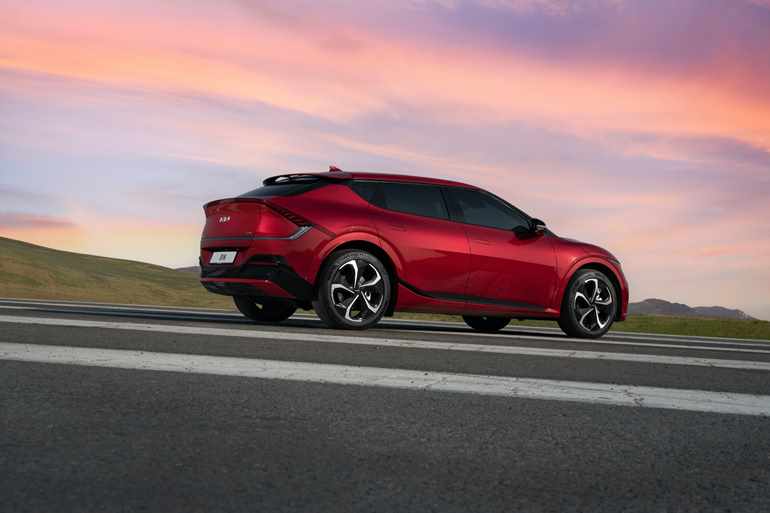
Are Electric Vehicles Really Green?
Electric vehicles (EVs) have become a prominent figure in the global push towards more sustainable transportation, with over 1 million fully electric cars now on our roads. Marketed as a greener alternative to fossil fuel-powered cars, EVs offer the promise of reduced carbon emissions and a future free from finite energy sources. But the question remains: are electric vehicles really green? In this article, we'll look into the environmental impact of EVs, examining whether they live up to their eco-friendly reputation.
Production Footprints
Although EVs offer a more sustainable driving experience by not relying on fossil fuels for energy, this benefit doesn’t account for the manufacturing process. So, let’s dive into some of the issues associated with manufacturing EVs:
Battery Manufacturing
One of the biggest environmental concerns surrounding EVs is the production of their batteries. Lithium-ion batteries, the predominant type used in EVs, require minerals like lithium, cobalt, and nickel. Mining these minerals can have detrimental environmental impacts, such as habitat destruction and water pollution. Plus, in some countries, mining operations have been linked to human rights violations. However, ongoing research and technological innovations are leading to more sustainable battery production methods. For instance, there is a growing focus on recycling used batteries, reducing the demand for newly mined materials.
"The typical lifespan of an EV battery is around 8 to 15 years. After that, its capacity diminishes, making it less suitable for vehicular use. However, these batteries can still be repurposed for less demanding applications, like energy storage."
Vehicle Manufacturing
The overall production process for EVs, apart from the battery, tends to be less carbon-intensive than that for petrol cars. However, when the battery's emissions are included, the production emissions of EVs can exceed those of conventional cars. That said, these emissions are a one-time event, and over the vehicle's lifespan, the lower emissions during the operational phase often offset this initial footprint.
Operating Emissions
Unfortunately, EVs on their own can’t fix the problem of carbon emissions. Even if the vehicles themselves don’t spew out pollutants, there are other factors at play. These include:
Carbon Emissions
The real green credentials of EVs shine when they're in use. Unlike conventional vehicles, which emit greenhouse gases every time they're driven, EVs produce zero tailpipe emissions. But this doesn't mean they're entirely carbon-neutral. The overall carbon footprint of an EV depends largely on how the electricity that charges its battery is produced. In regions where the grid relies heavily on coal, the environmental benefits of driving an EV might be less pronounced. Conversely, in areas powered by renewable sources like wind or solar, EVs can significantly reduce one’s carbon footprint.
Air Quality
Apart from CO2 emissions, EVs have a clear advantage in improving air quality. Petrol and diesel vehicles emit nitrogen oxides, particulate matter, and other pollutants that can cause respiratory problems and other health issues. EVs, with no exhaust emissions, help in substantially reducing urban air pollution.
Long-Term Impact of EVs
There’s also the question of what to do with EVs once they reach the end of their lifespan. At the moment, there are a few issues to consider when it comes to the long-term impact of EVs on the environment, such as:
Battery Disposal
The typical lifespan of an EV battery is around 8 to 15 years. After that, its capacity diminishes, making it less suitable for vehicular use (something which heavily impacts the resale value. If this is something that concerns you, consider Gap Insurance to help with any value shortfall). However, these batteries can still be repurposed for less demanding applications, like energy storage. Ultimately, the goal is to recycle these batteries, extracting valuable materials for reuse and reducing the environmental impact of disposal.
Vehicle Recycling
Like their fossil fuel counterparts, the majority of an EV’s components, such as metals and plastics, can be recycled. The key difference is in battery recycling, where processes are still being developed to make them more efficient and environmentally friendly.
Are Electric Vehicles Really Green?
It's clear that while EVs aren’t entirely eco-friendly, they hold significant promise in steering the world towards a more sustainable transportation future. Their environmental impact largely depends on various factors like electricity production methods, advancements in battery technologies, and recycling processes. In their current form, EVs represent a significant step forward from petrol-powered cars in terms of emissions during operation, especially as more countries shift towards renewable energy sources. As technology advances and the infrastructure supporting EVs evolves, their green credentials will only become more robust.
EVs Offer a Shade of Green
While electric vehicles aren't a silver bullet solution to environmental concerns, they are an essential part of the broader effort to reduce humanity's carbon footprint. It's crucial that we continue to invest in clean energy and sustainable technologies to ensure that EVs move closer to being truly green.
Wondering Whether You Should Buy An Electric Car Next?
Find out more in our blog; Should I Buy An Electric Vehicle Next?












